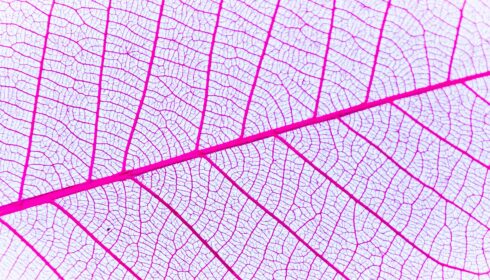The IRIS Cricoid Trial
 Effect of Cricoid Pressure Compared With a Sham Procedure in the Rapid Sequence Induction of Anesthesia. The IRIS Cricoid Trial
Effect of Cricoid Pressure Compared With a Sham Procedure in the Rapid Sequence Induction of Anesthesia. The IRIS Cricoid Trial
Aurélie Birenbaum. JAMA Surg 2018, published online October 17th 2018 doi:10.1001/jamasurg.2018.3577
Clinical Question
- In patients undergoing rapid sequence anaesthesia induction, does the use of cricoid pressure vs. a sham procedure, prevent pulmonary aspiration?
Background
- Cricoid pressure refers to digital pressure against the cricoid cartilage, pushing it backwards with the intention of oesophageal compression to prevent aspiration of gastric contents
- First described by Sellick in 1961 Sellick 1961 Paper
- Frequently described as a ‘standard of care’ in rapid sequence anaesthesia, however this is largely based on physiological reasoning rather than good quality evidence
- Several studies have challenged the efficacy of cricoid pressure in reducing aspiration Neilipovitz 2007, Ellis 2007
- In some studies cricoid pressure has been shown to worsen laryngeal view during intubation and even completely obstruct the airway
Design
- Randomised, double blinded, non-inferiority trial
- Patients were allocated in a 1:1 ration to the Sellick group or the Sham group by a computer generated randomisation list
- Patients undergoing any surgery requiring general anaesthesia with RSI were eligible
- Follow up was up to 28 days or until hospital discharge
- Difficulty of intubation was calculated from BMI, Mallampati score, mouth opening and thyromental distance
- The anaesthesia and intubation procedures were standardised following French guidelines
- Anaesthesia was induced with a rapid acting hypnotic (propofol, thiopental, etomidate or ketamine) plus succucinylcholine. Rocuronium was not permitted. The choice of hypnotic was left to the anaesthesiologists
- The decision to remove already present NG tubes or to administer anatacid or opioids was also left to the anaesthesiologist
- Time to intubation was measured
- To maintain blinding, an opaque cover was applied in both groups masking if the investigator applied pressure. The investigator who applied cricoid pressure could not replace the intubator
- Registered in ClinicalTrials.gov
Setting
- Conducted across 10 urban education centres in France
- Enrollment occurred between February 2014 until February 2017
Population
- Inclusion: Patients undergoing anaesthesia with RSI
- >18 years old with a full stomach (<6 hours fasting), or the presence of at least 1 risk factor for pulmonary aspiration (emergency conditions, BMI >30, previous gastric surgery, ileus, early postpartum, diabetic gastroparesia, gastrooesophageal reflux, hiatus hernia, pre operative nausea/vomiting and pain)
- Exclusion: Refusal, age <18 years, pregnancy, contraindication to cricoid pressure or use of Suxemethonium, pneumonia, pulmonary contusions or respiratory tract abnormalities, patients requiring alternative technique to laryngoscopy
- 3472 patients were enrolled
- Mean age (SD) was 51 and 1777 (51%) were men
- 1 patient excluded after he withdrew consent. 12 minor protocol violations occurred, including 8 uses of rocuronium. 2 patients had pre-existing pneumonia/predisturbed consciousness. 1 patient did not have surgery, and 2 patients later also withdrew consent
- 61% of patients had abdominal surgery, 14% endoscopy, 13% orthopaedic surgery, 4% head and neck and 2% cardiothoracic surgery
Intervention
- Sham cricoid pressure in place of cricoid pressure
Control
- Cricoid pressure
-
- An expected pressure of 30 N was applied with 3 fingers on the cricoid cartilage
- Operators were trained prior to the commencement and monthly with models
-
Management common to both groups
- The anaesthesia and intubation procedures were standardised following French guidelines
- Patients were intubated with macintosh metallic blades
- All intubators had more than one year of training
Outcome
- Primary outcome: No difference in incidence of pulmonary aspiration demonstrated
- 0.6% with cricoid pressure and 0.5% without
- Non-inferiority was not demonstrated as wide confidence intervals due to smaller number of aspirations compared to that predicted
- Secondary outcome:
- Incidence of difficult intubation was higher in cricoid group but did not reach statistical significance
- Increased C+L grade (grade 3 and 4) and time to intubation in cricoid group suggesting increased difficulty
- No difference was observed in all other secondary outcomes- pneumonia, difficulty in aspiration and traumatic complications
- The same results were obtained in patients without nasogastric tube and those requiring emergency surgery
Authors’ Conclusions
- This study failed to demonstrate non-inferiority of the sham procedure in preventing pulmonary aspiration
Strengths
- Large, randomised, double blinded trial
- Anaesthesia, tracheal intubation and cricoid pressures all standardised
- Operators repeatedly trained in providing cricoid pressure with the aim of eliminating poor technique
Weaknesses
- Pregnant women and children excluded
- Pulmonary aspiration remains significant cause of maternal mortality
- Conducted in a controlled theatre environment – may not apply to emergency conditions outside operating theatre where intubating conditions are worse or pulmonary aspiration may have occurred pre-intubation
- Populations contained heterogeneous risks for aspiration but no weighting given to these factors
- Conducted in France, in urban education centres which may not be generalisable to the British or Australasian population
- Wide confidence intervals due to the infrequency of the primary outcome
The Bottom Line
- In patients undergoing general anaesthesia with RSI, this RCT failed to demonstrate the non-inferiority of a sham procedure compared with cricoid pressure at preventing pulmonary aspiration. However, the negative outcome may be more attributable to the study design
- Should the question have been ‘Is cricoid pressure beneficial, given the known harms?’ using a superiority design
- This study highlights that the benefits of cricoid remain unproven, however it reinforces concerns about harms of cricoid pressure through interference with intubation
- It is unclear if this is applicable to patients in ICU or ED
- Further studies need to be undertaken which include pregnant women
External Links
- Original Paper: IRIS Cricoid Trial
- Further reading: Rebel EM Review
- Further reading: St Emlyn’s Review
Metadata
Summary author: Laura Chapman
Summary date: 31/01/2019
Peer-review editor: Fraser Magee & David Slessor




Two major problems with this otherwise excellent study
1 most patients were not realisticaly high risk of aspiration (as shown by the observed rate of aspiration) which makes it underpowered
2 the methodology of applying cricoid pressure (force) was significantly flawed.
Cricoid force should be at least 25N (optimal range 25-35N)
They used a 50ml syringe filled with air to 40ml which was compressed to 33 mls.
The standard way to simulate 30N (3kg) is to fill with 50ml and compress to 30-33 ml (depends on which syringe used)
What was being simulated/applied in this study (unless it was a misprint) is about 15N …. which makes it a study of sham cricoid vs ineffecticve cricoid.
I hope it was a misprint